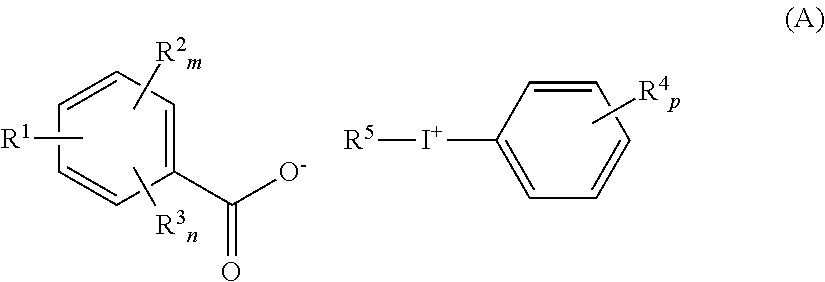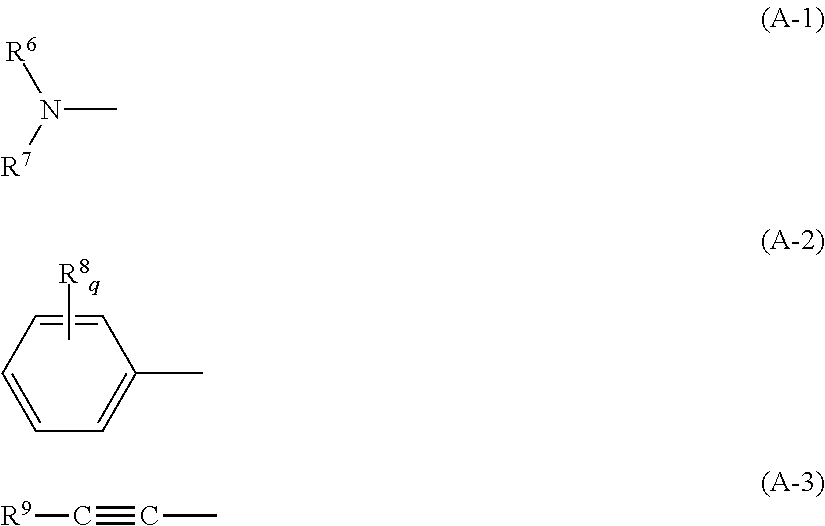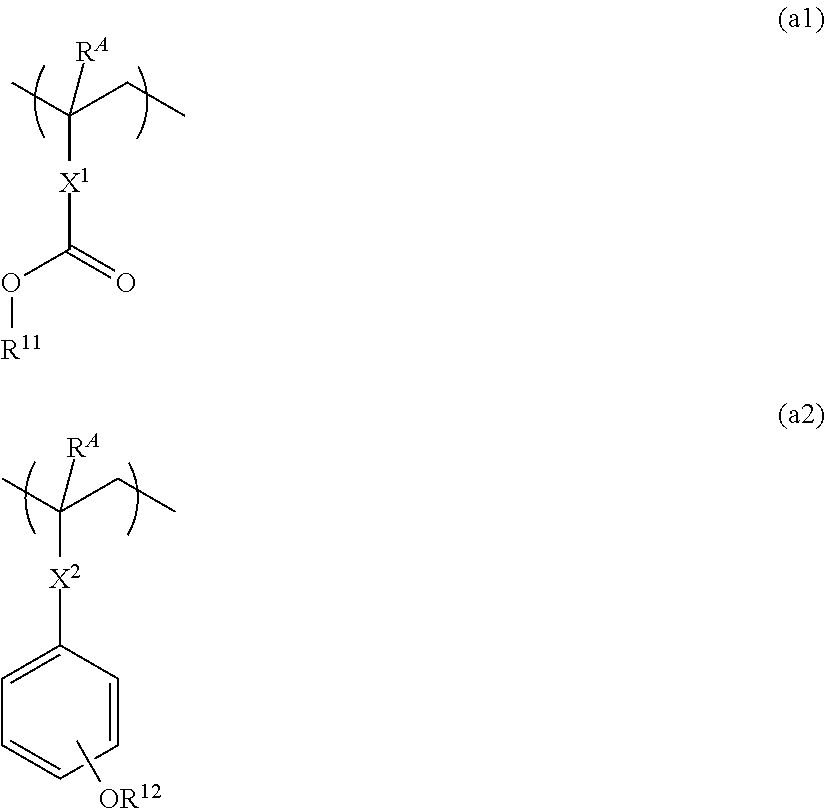Resist composition and patterning process
a composition and resist technology, applied in the field of resist composition, can solve the problems of reduced resolution and focus margin of hole and trench pattern, very difficult control of acid amplifying system, and little influence on performance improvement, so as to achieve wide focus margin, improve resolution, and high contrast
- Summary
- Abstract
- Description
- Claims
- Application Information
AI Technical Summary
Benefits of technology
Problems solved by technology
Method used
Image
Examples
example
[0172]Examples of the invention are given below by way of illustration and not by way of limitation. The abbreviation “pbw” is parts by weight.
[0173]Iodonium salts of fluorinated aminobenzoic acid, fluorinated nitrobenzoic acid or fluorinated hydroxybenzoic acid, designated Quenchers 1 to 16, used in resist compositions are identified below. Quenchers 1 to 16 were synthesized by ion exchange between a fluorinated aminobenzoic acid, fluorinated nitrobenzoic acid or fluorinated hydroxybenzoic acid providing the anion shown below and an iodonium chloride providing the cation shown below.
[0174]
Synthesis Example: Synthesis of Base Polymers (Polymers 1 to 5)
[0175]Base polymers were prepared by combining suitable monomers, effecting copolymerization reaction thereof in tetrahydrofuran (THF) solvent, pouring the reaction solution into methanol for crystallization, repeatedly washing with hexane, isolation, and drying. The resulting polymers, designated Polymers 1 to 5, were analyzed for com...
examples 1-1 to 1-17
and Comparative Examples 1-1 to 1-9
[0185]On a substrate (silicon wafer), a spin-on carbon film ODL-102 (Shin-Etsu Chemical Co., Ltd.) having a carbon content of 80 wt % was deposited to a thickness of 200 nm and a silicon-containing spin-on hard mask SHB-A940 having a silicon content of 43 wt % was deposited thereon to a thickness of 35 nm. On this substrate for trilayer process, each of the resist compositions in Tables 1 and 2 was spin coated, then baked on a hotplate at 100° C. for 60 seconds to form a resist film of 80 nm thick.
[0186]Using an ArF excimer laser scanner NSR-S610C (Nikon Corp., NA 1.30, σ 0.98 / 0.78, 35° cross-pole illumination, azimuthally polarized illumination), the resist film was exposed through a 6% halftone phase shift mask bearing a pattern having a line of 50 nm and a pitch of 100 nm (on-wafer size) by immersion lithography. Water was used as the immersion liquid. The resist film was baked (PEB) at the temperature shown in Tables 1 and 2 for 60 seconds. The...
examples 2-1 to 2-5
and Comparative Examples 2-1 to 2-3
[0190]Each of the resist compositions in Table 3 was spin coated onto a silicon substrate, which had been vapor primed with hexamethyldisilazane (HMDS), and pre-baked on a hotplate at 110° C. for 60 seconds to form a resist film of 80 nm thick. Using a system HL-800D (Hitachi Ltd.) at an accelerating voltage of 50 kV, the resist film was exposed imagewise to EB in a vacuum chamber. Immediately after the image writing, the resist film was baked (PEB) on a hotplate at 80° C. for 60 seconds and developed in a 2.38 wt % TMAH aqueous solution for 30 seconds to form a pattern.
[0191]The resist pattern was evaluated for sensitivity, resolution and LWR. The resolution is a minimum L / S size at the exposure dose that provides a resolution as designed of a 120-nm L / S pattern. The 120-nm L / S pattern was measured for LWR. The results are shown in Table 3.
[0192]
TABLE 3PolymerAcid generatorQuencherOrganic solventSensitivityResolutionLWR(pbw)(pbw)(pbw)(pbw)(μC / cm2)...
PUM
| Property | Measurement | Unit |
|---|---|---|
| wavelength | aaaaa | aaaaa |
| reaction time | aaaaa | aaaaa |
| reaction time | aaaaa | aaaaa |
Abstract
Description
Claims
Application Information
 Login to View More
Login to View More - R&D
- Intellectual Property
- Life Sciences
- Materials
- Tech Scout
- Unparalleled Data Quality
- Higher Quality Content
- 60% Fewer Hallucinations
Browse by: Latest US Patents, China's latest patents, Technical Efficacy Thesaurus, Application Domain, Technology Topic, Popular Technical Reports.
© 2025 PatSnap. All rights reserved.Legal|Privacy policy|Modern Slavery Act Transparency Statement|Sitemap|About US| Contact US: help@patsnap.com



